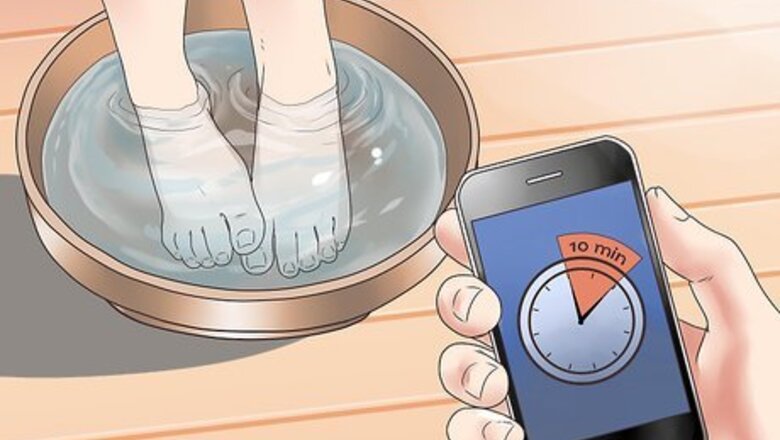
views
X
Trustworthy Source
American Academy of Dermatology
Professional organization made of over 20,000 certified dermatologists
Go to source
Corns are your body's protective response to repeated friction or pressure, but they can also be painful. Luckily, you can treat most corns easily with home remedies. If your corns are causing you a lot of pain, or if you have diabetes, it is best to have your corns treated by a medical professional.
Treating Your Corns at Home
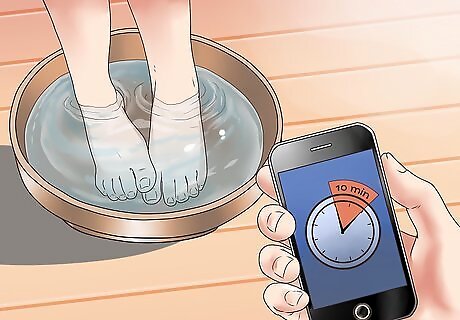
Soak your corns in warm water for 10 minutes. Soaking your corns will soften the thickened skin, making it easier to remove. Fill a foot bath or other shallow basin with warm, soapy water and soak the affected area for 10 minutes or until the corn begins to feel softer. The water should be warm, but not so hot that it scalds your skin. Some people find it helpful to add a little apple cider vinegar, lemon juice, or baking soda to the warm water.
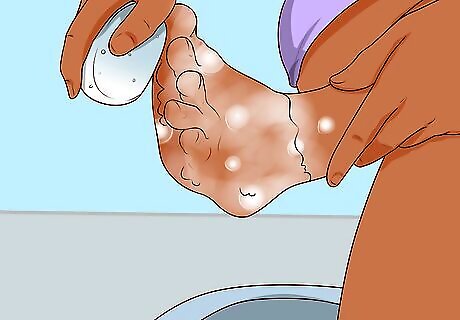
File away the softened corn with a pumice stone. Once you’ve soaked your corn in warm water for a bit, take a pumice stone and dip it in the water. Rub the stone gently over the corn, making small circles or sideways motions. You can also use a nail file, emery board, or even a rough washcloth or exfoliating pad. Be careful not to scrub too aggressively or remove too much skin since this can lead to irritation or infection. Don’t use a pumice stone on your skin if you have diabetes, because this can lead to slow-healing wounds and infections. See your doctor or podiatrist for treatment and advice.
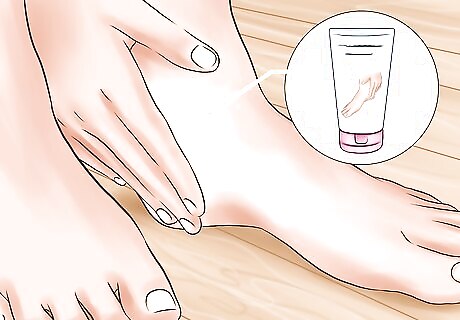
Moisturize the affected area every day. Moisturizers can help soften the skin of hardened corns, eventually making them easier to remove. Moisturizing creams or lotions containing salicylic acid, ammonium lactate, or urea may be especially helpful for softening corns.
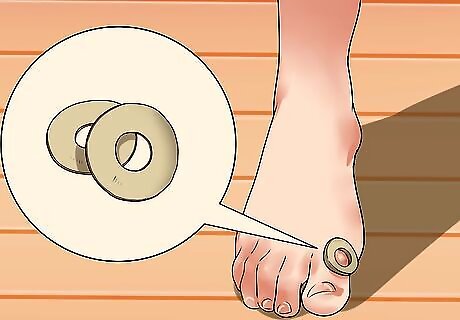
Use padding to prevent further irritation. Look for corn or callus pads online or in your local drugstore. You can buy specially made corn pads or purchase moleskin that you can cut to the right shape and size for your corns.
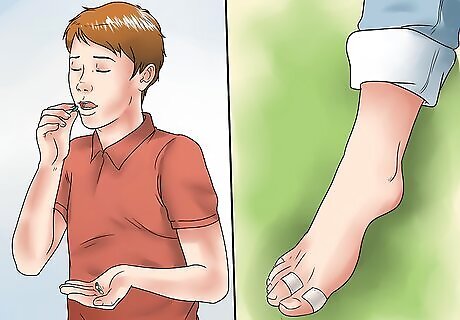
Try over-the-counter medications on stubborn corns. Follow package instructions carefully, and use these products with caution. Most corn removal products contain salicylic acid, which could irritate or burn your foot. If you have diabetes, don’t use these products without consulting your doctor. They could lead to irritation and infection. Most OTC pads contain 40% salicylic acid, making this a strong medication. Even so, your doctor may recommend that you file away some of the dead skin on the corn before applying the pad.
Getting Medical Treatment
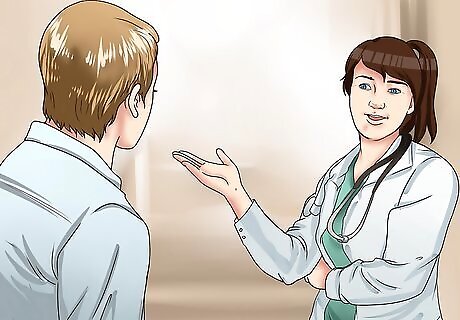
See your doctor to have the corn assessed. Over-the-counter remedies do exist and are helpful, but there's no substitute for seeing a licensed doctor with a full arsenal of medical options. It is especially important to see a doctor for treatment if you have diabetes. Additionally, if you are troubled by corns that are causing you a lot of pain or do not respond well to home remedies, see your general practitioner or a get a referral to a podiatrist. A medical professional can help you determine the cause of the corn so you can deal with the problem directly. Corns are most often caused by footwear that doesn't fit properly, excessive use of dress shoes, toe deformities, or problems with your posture or gait that pressure areas of your feet. Your doctor or podiatrist will most likely decide to remove the corn for you but will advise you that the corn will return if you do not resolve the condition that caused it. If the doctor suspects that an underlying physical abnormality (such as bunions or bone spurs) is contributing to your corns, they may recommend an x-ray or other imaging tests.
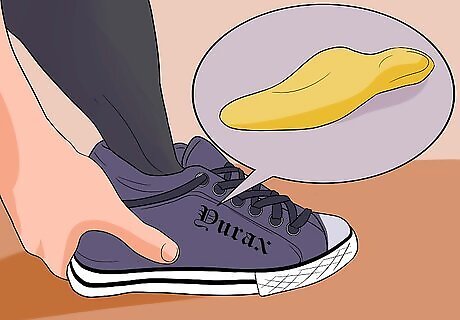
Follow the doctor’s recommendations for corn management. These may include a change in footwear, padding to protect the area from friction or pressure, foot orthotics to change the pressure distribution on your feet, or a surgical correction for foot or toe problems.
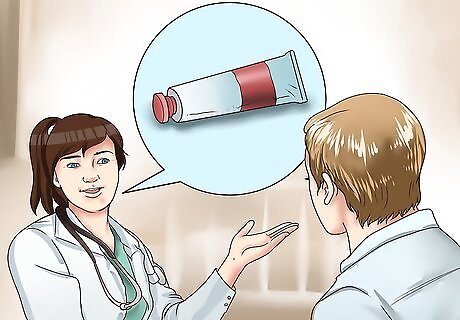
Talk to your doctor about using antibiotics for infected corns. In some cases, corns may become infected. If you notice that your corn is painful, inflamed, or has a liquid discharge (pus or clear liquid), make an appointment with your doctor right away. If you are prone to infection, your doctor may also recommend a preventative antibiotic ointment.
Preventing Corns from Developing
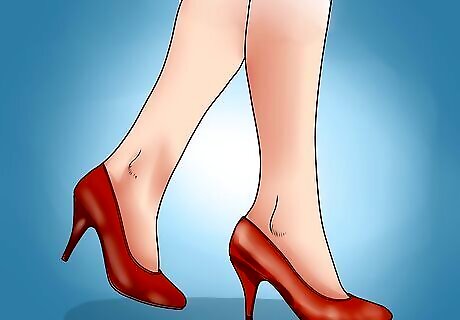
Wear shoes that fit properly. Shoes that pinch or rub your feet can cause corns and calluses. Get your feet measured next time you go to the shoe store, and make sure that you select shoes that are neither too loose nor too tight. Look for properly fitted, well-padded shoes that have a wide toe box. Bring your shoes to a cobbler to have the toe box stretched in the area where you develop corns. Go shoe-shopping later on in the day. Feet naturally swell as the day progresses. That means that shoes bought early in the day might not fit you later on in the day.
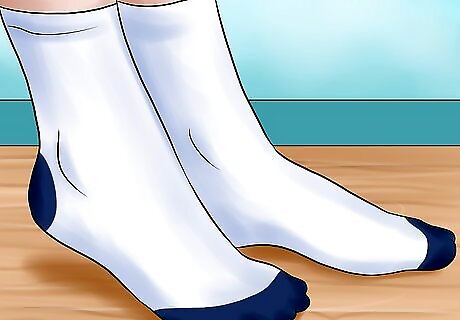
Choose thick socks to absorb pressure on the foot. Make sure the socks fit loosely and do not cause your shoe to be too snug. Also, make sure that your socks don't have seams that rub against any corns or places where you might get corns.
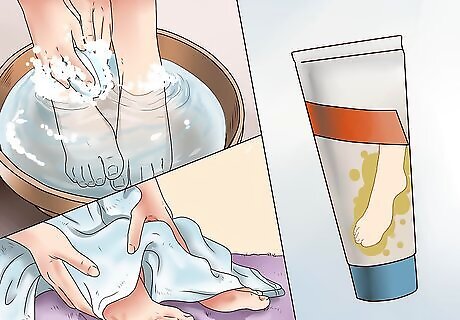
Keep your feet clean and moisturized. Washing and moisturizing your feet daily will keep your skin soft and prevent new corns from developing. Take a few minutes every day to gently scrub your feet with a brush and warm, soapy water. When you’re done, apply a hydrating foot cream. Change your socks daily and use a pumice stone regularly after washing your feet. When using a pumice stone, be careful not to scrape away dead skin too forcefully.
















Comments
0 comment